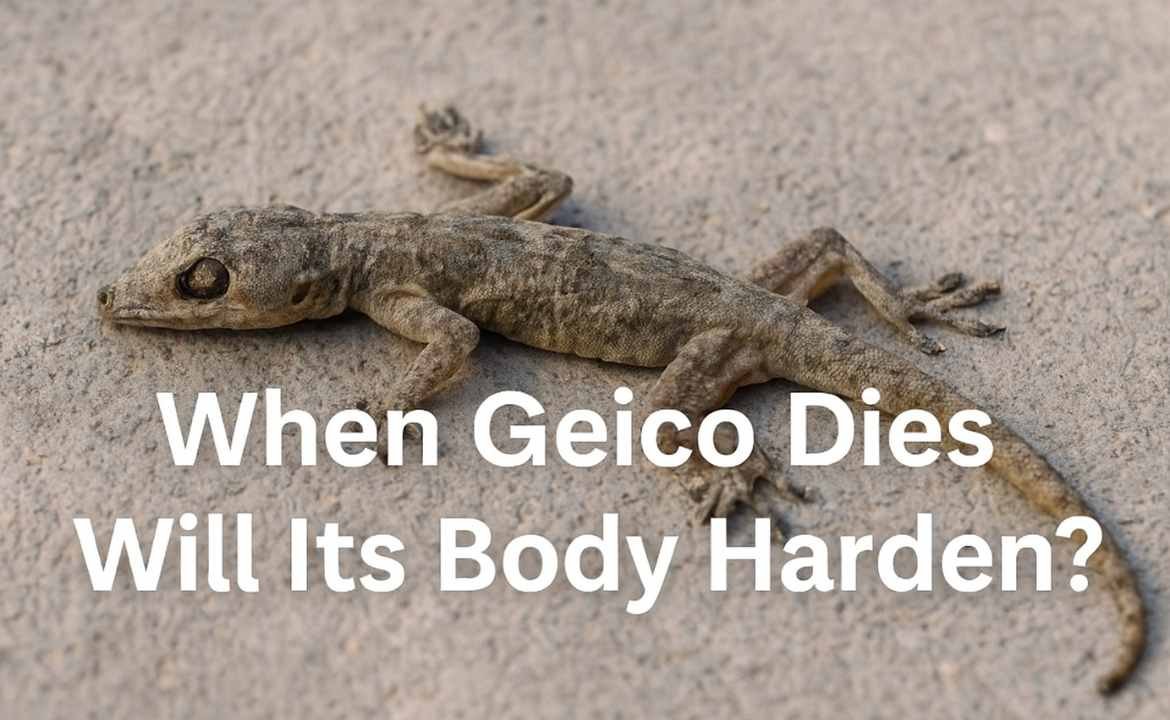Geckos, often mistaken for “Geico” due to the popular insurance mascot, are fascinating reptiles. One peculiar question many ask is: When Geico dies will its body harden? The answer reveals much about reptile biology, natural decomposition, and physical transformation after death. Understanding what happens to a gecko’s body can offer insight into its anatomy and the science of decomposition in reptiles.
This article explores the hardening of gecko bodies after death, their skeletal structure, what causes stiffness, and how it relates to other cold-blooded animals.
Understanding Gecko Anatomy and Physiology
Geckos are small lizards found worldwide in warm climates. They are cold-blooded creatures with delicate skin, flexible joints, and lightweight bones. Their bodies are covered in tiny scales, and their skeleton is composed mainly of cartilage and bone.
When alive, a gecko’s body is supple and flexible. Their muscles and tendons allow them to climb, leap, and cling to surfaces. However, when a gecko dies, a natural process begins that leads to visible changes in its body, including potential hardening.
What Happens to a Gecko’s Body After Death?
Rigor Mortis in Reptiles
Just like in mammals, rigor mortis affects geckos. This is a temporary state of stiffness caused by chemical changes in muscles after death. It occurs because adenosine triphosphate (ATP), the energy source that allows muscles to relax, is no longer produced.
Without ATP, the muscles contract and lock in place, giving the impression of a hardened body. This is often mistaken as a permanent hardening, but it typically lasts only a few hours to a day, depending on environmental factors like temperature and humidity.
Dehydration and Desiccation
Another reason a gecko’s body might seem hard after death is dehydration. As moisture leaves the soft tissues, the body may dry out, becoming stiff and brittle. This desiccation process can take longer than rigor mortis and results in a hardened state that may persist.
In dry environments, a gecko’s body can mummify. Its skin tightens, and internal organs shrink, creating a firm, dry shell of what once was a living lizard.
Does the Gecko’s Skeleton Harden After Death?
Bones and Cartilage
A gecko’s bones don’t harden more after death—they are already formed and structured. However, when surrounding tissues shrink or dry out, the bones can become more prominent and feel harder under the skin. This creates the perception that the entire body has stiffened or hardened permanently.
Influence of Environmental Factors
The condition of a deceased gecko depends heavily on its surroundings. In a warm, humid environment, decomposition occurs more quickly. The body may become soft, swollen, and break down rapidly. In contrast, dry or cold environments slow the process and can lead to preservation or natural hardening.
The Role of Insects and Microorganisms
When a gecko dies in the wild, insects and bacteria begin the decomposition process. As tissue is consumed, the body becomes lighter, and only the bones or dried skin may remain. Over time, the body may lose its flexibility entirely, leading observers to believe the gecko has “hardened.”
This biological breakdown is essential for recycling nutrients in nature. However, it further emphasizes that the hardening is not due to any change in the bones themselves but is a side effect of the decomposition process.
Can a Dead Gecko Remain Flexible?
Temporary Flexibility
In some cases, especially in the early hours after death, a gecko may remain flexible. This is before rigor mortis sets in. The body can be gently moved or repositioned. However, as time progresses, stiffness may occur temporarily, followed by eventual loosening or drying, depending on the environment.
After Decomposition
Once the decomposition phase ends, only skeletal remains may be found. These are naturally rigid, not due to post-death hardening, but because bones are inherently solid. If preserved properly, dried gecko skeletons can last for years.
When Geico Dies: A Common Misunderstanding
The term “when Geico dies will its body harden” is often a mix-up between the mascot “Geico” and the actual animal, the gecko. Geico is a fictional character—a cartoon lizard representing an insurance brand. However, if we shift focus to real geckos, the question becomes a curious entry point into animal biology and post-mortem changes.
Common Related Questions
Do All Reptiles Harden After Death?
Yes, most reptiles go through rigor mortis, just like mammals and birds. This stiffness is temporary and can be followed by either softening or drying. However, cold-blooded creatures may experience these changes at different rates based on external temperatures.
Can a Gecko Be Preserved?
Yes, geckos can be preserved after death. Pet owners or researchers may preserve them using freezing, chemical treatment, or taxidermy methods. In these cases, the body may seem permanently hardened due to treatment rather than natural causes.
Conclusion
So, when Geico dies will its body harden? If you mean a real gecko, then yes—its body may harden temporarily due to rigor mortis and later become stiff due to dehydration or decomposition. This is a natural and expected biological process, not a magical transformation.
